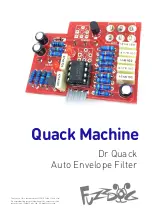
Bronkhorst®
Instruction Manual ES-FLOW™
9.17.116B
13
Environment
To prevent damage to the internal electronics, make sure the temperature inside the instrument housing does not exceed
60 °C. If necessary, take appropriate heat discharging measures, especially if the instrument is operated inside an enclosure
(e.g. a control cabinet).
2.3
Fluidic connections
The FLOW arrow on the measuring tube indicates the normal flow direction. For normal use, install the
ES-FLOW™
in the
process line, in accordance with the direction of the FLOW arrow. For bi-directional measuring, install the instrument in the
direction where the highest flow will be measured (if applicable). When deciding in which direction to install the instrument,
take into account that the measuring range in the opposite direction is approximately 73% of the full scale range (whereas
the instrument can measure 131% FS in the normal direction).
Tighten fittings according to the instructions of their manufacturer.
Do not install small diameter piping on high flow rates and avoid abrupt angles or other disturbances within a distance of
10 pipe diameters from the inlet or outlet of the device.
Do not install pressure regulators within a distance of 25 pipe diameters.
Check the system for leaks before applying pressure, especially if toxic, explosive or other dangerous fluids are used.
2.4
Electrical connections
The
ES-FLOW™
is equipped with one or more electrical connection ports. The image to the
right shows the locations of the different ports (the actual presence and appearance of ports
might be different, depending on the ordered fieldbus interface and instrument type):
1. Standard connection port, 8-pin M12 male
2. Fieldbus connection port, 5-pin M12 male/female (optional, fieldbus dependent)
3. Connection port for actuator output, 4-pin M8 female
See sections
for configurable and installed options
respectively.
Upon delivery, all connection ports are covered with plastic caps. To maintain the original ingress protection rating, do not
remove the caps of unused connections.
Electrical connections must be made with standard cables or according to the applicable hook-up diagram. Make sure that
the power supply is suitable for the power ratings as indicated on the instrument label or in the technical specifications,
and that double or reinforced insulation is used for the power supply cabling.
Do not power the instrument simultaneously from two different power sources (e.g. bus connection and Plug-in Power
Supply). Doing so will damage the printed circuit board irreparably.
The device contains electronic components that are susceptible to damage by
electrostatic discharge
. Proper handling
procedures must be taken during installation, removing and connecting the electronics.
The device described in this manual carries the CE-mark and is
compliant with the concerning EMC requirements
.
However, compliance with the EMC requirements is not possible without the use of proper cables and connector/gland
assemblies Bronkhorst recommends the use of their standard cables. These cables have the right connectors and if loose
ends are used, these are marked to prevent wrong connection. When using other cables, cable wire diameters should be
sufficient to carry the supply current, and voltage loss must be kept as low as possible. When in doubt, contact your
distributor.
When connecting the product to other devices (for instance a PLC), be sure that the integrity of the shielding is not affected.
Do not use unshielded wire terminals
.














































